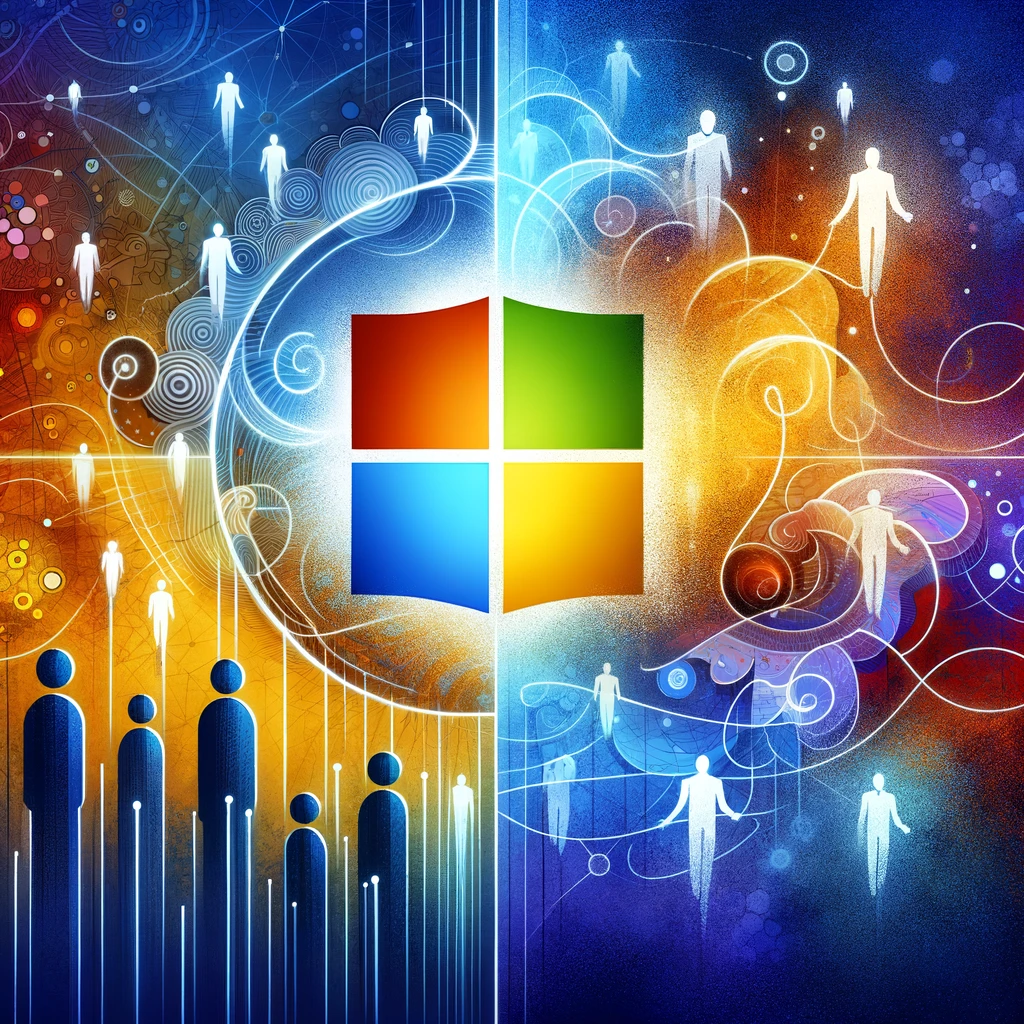Satya Nadella, who took the reins as Microsoft’s CEO in February 2014, is celebrating his 10th anniversary in the role. Under his leadership, Microsoft has undergone a remarkable transformation, emerging as the world’s most valuable public company with a market capitalization of $3.06 trillion, surpassing even tech giant Apple. Nadella’s tenure has been characterized by significant advancements in cloud computing and strategic acquisitions. However, as he looks ahead, several challenges and opportunities await the tech visionary.
The Nadella Era: From mediocrity to excellence
When Satya Nadella assumed the role of CEO, Microsoft was facing a period of stagnation and mediocrity. Its market capitalization stood at just over $300 billion, and the company was struggling to keep pace with its competitors. Under Steve Ballmer’s leadership, Microsoft had fallen behind in key areas such as web search, mobile, and social media.
Nadella’s arrival marked a turning point for Microsoft. Over the past decade, he has not only rejuvenated the company but also led it to unparalleled success. Microsoft’s market valuation has grown tenfold, positioning it as the world’s most valuable public company. Nadella’s strategic focus on cloud computing and artificial intelligence has solidified Microsoft’s position as a leader in these critical domains.
Praise from industry experts
Across the tech industry, Satya Nadella is widely lauded for his transformative leadership. Many industry analysts and investors regard him as one of the greatest tech CEOs of all time. His ability to reshape Microsoft’s trajectory and reverse the decline during the Ballmer era has earned him accolades and recognition as a visionary leader.
The road ahead: Challenges and opportunities
As Nadella looks forward to the next phase of his leadership, several challenges and opportunities loom on the horizon:
1. Relevance in the digital age:
While Microsoft remains a dominant force in the business world, the company must adapt to the preferences of younger generations who may not have grown up using Microsoft products. Preparing for the era when Gen Z holds IT budgets is crucial, and investments in products like OpenAI’s ChatGPT may be a step in the right direction.
2. Employee retention:
Microsoft has a longstanding issue of retaining top talent. Some employees have left for higher compensation at rival tech companies, only to return after negotiating better packages. With a substantial cash reserve of $81 billion, Microsoft may need to utilize more of its resources to retain its top-tier talent.
3. Product innovation:
Critics argue that Microsoft often struggles with new product categories, typically requiring several iterations to get it right. The company faces fierce competition in areas like tablets, where the iPad remains a top choice. Innovating and staying ahead in emerging markets is a challenge that Nadella must address.
4. Regulatory scrutiny
Like other tech giants, Microsoft faces increasing regulatory scrutiny. Antitrust officials have recently blocked acquisitions at Adobe and Amazon, and Microsoft’s push into AI has drawn inquiries in Europe. Navigating regulatory challenges while continuing to expand is a balancing act Nadella must master.
5. Complex OpenAI relationship
Microsoft’s strategic partnership with OpenAI, a leader in artificial intelligence, is not without its complexities. The two companies sometimes compete for AI services sales, leading to internal tensions. Managing this delicate partnership while maximizing its benefits will require careful attention.
6. Identifying the next growth driver
Nadella’s ability to identify the next major growth driver for Microsoft will be critical. While AI has been a focus, the company must continue to explore new avenues for revenue and profit generation, ensuring sustained growth in the ever-evolving tech landscape.
Satya Nadella’s legacy at Microsoft is already one of transformation and achievement. However, the challenges he faces in maintaining and furthering the company’s success are substantial. As he enters the next phase of his leadership, the tech industry will closely watch how he navigates these hurdles and continues to shape Microsoft’s future.
The Nadella Era: From Mediocrity to Excellence
Satya Nadella took over as Microsoft’s CEO during a period of stagnation, but his visionary leadership has transformed the company into the world’s most valuable public company, with a market capitalization of $3.06 trillion.
Nadella’s transformative leadership at Microsoft has earned him recognition as one of the greatest tech CEOs of all time. His ability to reshape the company’s trajectory and reverse its decline under Steve Ballmer is widely celebrated.
As Nadella enters his second decade as CEO, several challenges and opportunities lie ahead, including staying relevant in the digital age, retaining top talent, driving product innovation, navigating regulatory scrutiny, managing the complex OpenAI relationship, and identifying the next growth driver for Microsoft.





